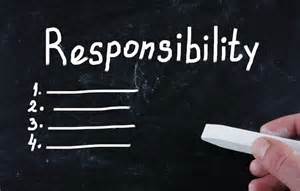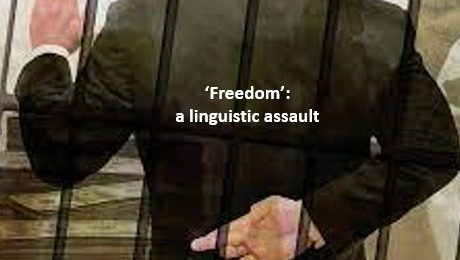
The Canadian Universities Reciprocal Insurance Exchange (CURIE) is an insurer for universities in Canada. CURIE provides universities with insurance coverage, risk management services, and essential knowledge sharing and insight.
Coverage includes legal liability and defence costs.[1]
Universities are covered for professional liability, which is a sophisticated way of saying they have insurance for legal claims brought against them by students attending their institution. These claims are colloquially referred to as Educational Malpractice, or Educational Errors & Omissions, or Failure to Educate.
In the past, Canadian Courts had generally held that Courts “did not have to hear actions [from students] relating to academic disputes within universities”. According to CURIE’s literature, “CURIE was instrumental in developing that line of cases”[2], and “continue[s] to be aggressive in the defence of such claims, and continue[s] to push for developments in the law which minimize the availability of such claims” to students.[3]
CURIE’s literature notes that Failure to Educate claims are “not only expensive to defend (both in terms of actual defence costs, and person hour costs of those within the university on point for response), but also carry unique reputational risks for universities”. [4]
CURIE’s literature does not address the cost for students having to deal with these type of unanticipated issues against their own school and its insurance company. For most students this type of issue would be particularly daunting from a financial, time, and emotional perspective.
CURIE’s testimonials on its website from universities across Canada indicate the Universities are “all in this together”, and that “CURIE claims specialists settle claims strategically to avoid unsustainable precedents being set within the Canadian University system”.[5]
What is an “Educational Malpractice” Claim?
Educational malpractice claims tend to fall into one of three general categories: (1) a student, or a claimant injured by the student, alleges that the school negligently failed to provide the student with adequate skills; (2) the student, or the claimant, alleges that the school negligently diagnosed or failed to diagnose the student’s learning or mental disabilities; or (3) the student or claimant alleges that the school negligently supervised the student’s training.
The essence of an educational malpractice claim calls into question the quality or the effectiveness of instruction or training given by an academic or trade institution. If the claim requires “an analysis of the quality of education received, and in making that analysis the fact finder must consider principles of duty, standards of care, and the reasonableness of the defendant’s conduct,” then the claim is one of educational malpractice. This includes claims:
- where the duty alleged to have been breached is the duty to educate or train effectively.
- that educational services provided were inadequate, substandard, or ineffective.
- where the court is asked to evaluate the curriculum, course of instruction, or the soundness of the method of teaching that has been adopted by an educational institution.[6]
Scope of the “Educational Malpractice Doctrine
(A) United States Law
The U.S. based Defence Research Institute notes that “when a lawyer commits malpractice, the injured party sues the lawyer. When a doctor commits malpractice, the injured party sues the doctor. But what if a law school or a medical school commits malpractice in training one of its students? Can it be sued for malpractice? In the vast majority of jurisdictions, the answer is “no,” but there are narrow exceptions and notable distinctions to this rule”.[7]
The legal theory of educational malpractice has been consistently and repeatedly rejected as a cause of action by Courts in an overwhelming majority of jurisdictions across the United States based on public policy considerations:[8]
“Among other problems for adjudication [of educational malpractice claims], these claims involve the judiciary in the awkward tasks of defining what constitutes a reasonable educational program and of deciding whether that standard has been breached. In entertaining such claims, moreover, courts are required “not merely to make judgments as to the validity of broad educational policies . . . but, more importantly, to sit in review of the day to day implementation of these policies.”
The application of the educational malpractice doctrine has been uniquely broad, regardless of the educational facility involved. Courts have held such actions – whether alleged by a student or a third party – to be invalid where alleged against public schools, colleges and universities, community colleges, seminars, daycare facilities, and private proprietary and trade schools.
Educational malpractice claims however, have been distinguished from clearly identifiable negligence claims arising in the educational context. The duty not to cause physical injury by negligent conduct “does not disappear when the negligent conduct occurs in an educational setting.”
An example is the duty of a medical school residency program to train a resident in needle safety and supervise her, in the course of her instruction, while performing a procedure involving needles.[9] In Doe v. Yale University, the plaintiff filed an action for personal injuries against her medical school after she had contracted the HIV virus when – while working as a resident at the defendant university’s hospital – she performed an unsupervised procedure on a patient.
Thus, a clearly identifiable negligence case within the educational context is distinguished from a case alleging educational malpractice where: (1) the claimant is a student; (2) alleging personal injuries; (3) against his or her school or educator; and (4) arising during the course of instruction.
(B) Canadian Law
Whether framed in contract or tort, the Canadian Courts have historically maintained that “academic disputes” within universities are within the sole purview of the university to be dealt with through its internal procedures. Only in limited circumstances was a student permitted the right to judicial review, and in those cases only as against the “procedures” used by the University to make the decision, “but they could not ask the court to interfere with the academic decisions or judgements of the university”.[10]
In 2009 the Ontario Superior Court of Justice in Jaffer v. York University continued the refrain that the Courts have no jurisdiction to hear Educational Malpractice civil actions: “[T]his is a matter outside of the Court’s jurisdiction…. While there may be contractual or tortious issues within the broader claim, if the pith and substance of the impugned conduct is academic in nature, the action cannot be continued in the courts”.[11]
However, the Ontario Court of Appeal indicated on appeal a limited willingness to hear cases involving academic decisions. The Ontario Court of Appeal noted that the Superior Court Judge in Jaffer v. York University did not have the benefit of the Appellate Court’s decision in Gauthier v. University of Ottawa[12] in coming to his decision:
- “Gauthierhas clarified that the decisions of this court upholding the dismissal of claims relating to academic matters did not do so on the basis that the court lacked jurisdiction …, but rather … because the pleadings did not disclose a reasonable cause of action based upon contract, tort, or negligence or … because the cause of action was untenable in law”.[13]
- “After reviewing the cases”, the Court of Appeal “concluded” in “Gauthierthat it is the remedy sought that is indicative of jurisdiction. Judicial review is the proper procedure when seeking to reverse an internal academic decision. However, if a plaintiff alleges the basis for a cause of action in tort [ie. clearly identifiable negligence claim referred to in the US court decision] or contract and claims damages, then the court will have jurisdiction even if the dispute arises out of an academic matter”.[14]
- The Court of Appeal in Gauthier “noted that by enrolling at the university, it is understood that the student agrees to be subject to the institution’s discretion in resolving academic matters, including the assessment of the quality of the student’s work and the organization and implementation of university programs. As a result, a student will usually have to do more than simply argue that an academic result is wrong or a professor is incompetent in order to make out a cause of action in breach of contract or a duty of care”.[15]
- “Thus, although the court has jurisdiction to hear such claims, the Court may strike a claim… when it appears that the cause of action is untenable or unlikely to succeed. This will occur if, for example, an action is simply an indirect attempt to appeal an academic decision and the appropriate remedy would be judicial review, or if the pleadings do not disclose details necessary to establish that the university’s actions go beyond the broad discretion that it enjoys”.[16]
In summary, these two recent decisions of the Ontario Court of Appeal state that there is no precedent that the court lacks jurisdiction to hear cases solely because the issue arises out of a dispute of a scholastic nature. However, the Ontario Court of Appeal was clear that its willingness to hear cases involving academic decisions of Universities would be in limited circumstances – in particular, only where the University has exceeded the “broad discretion that it enjoys” in making such decisions. [Gauthier v. University of Ottawa, 2010 ONCA 309; Jaffer v. York University, 2010 ONCA 654]
The Ontario Court of Appeal decisions appear to allow students to ‘knock’ on the courtroom door and enter the foyer, but as noted by CURIE, not allowed in. The Canadian universities Insurer CURIE has told its members that “arguing in support of this ‘broad discretion’”, it has through its appointed defence counsel been “successful in having numerous Failure to Educate claims” brought by students in Court “struck at the outset”.[17]
(C) The Court’s Philosophy in Canada and U.S.
Thus the ability of a student to bring a matter before the Courts by way of a civil proceeding is indeed limited. The philosophy generally followed by courts in the U.S. and Canada seems to be that the courts are ill-equipped to involve themselves in day-to-day educational decisions to determine what should or should not be taught in a particular curriculum and how well is “good enough.” The concern is that recognition of educational malpractice claims would inevitably turn the courts into “curriculum police,” opening the floodgates of litigation and forcing judges to sit in day-to-day review of specific academic choices, a responsibility the courts are ill-suited to carry out.[18]
Thus in Canada, only a clearly identifiable negligence (personal injury) or contract case within the educational context – that is ‘crystal clear’ that the university’s actions inappropriately go beyond the broad discretion that it enjoys – will be distinguished from a case alleging educational malpractice, and be permitted to be heard in a Court of law by way of civil action. It is expected that Canadian courts will continue to be reluctant to wade into disputes between students and their university, deferring academic matters to internal school procedures.
Public Policy – should the law by expanded?
Despite the current state of the law in Canada and the U.S. with respect to educational malpractice, some legal commentators have suggested that a tort of educational malpractice may be appropriate for particularly outrageous failures of the educational system, and specifically reject the explicit (U.S.) or implied (Canada) reasoning behind the court decisions that “it is too difficult for [Courts] to set a standard of care in teaching. Courts routinely set a standard of care for physicians and surgeons … by far the more technical, and the more remote from the experience of the judge and members of the jury”.[19]
With respect to the “opening the floodgates of litigation”, it is argued that this is a poor reason to deny recovery for any genuine, serious issue as it is the “business of law to remedy wrongs that deserve it”. The only job of courts is to adjudicate disputes between people.[20]
American and Canadian courts have been equally alert in denying recovery for educational malpractice. No Canadian court has allowed an action for damages against a school board, university, or its teachers and professors for negligent provision of education or failure to provide an appropriate education. The Ontario Court of Appeal decision continues to accept that, for example, a student limits his or her rights simply “by enrolling” at a university, stating that by this fact “it is understood that the student agrees to be subject to the institution’s discretion in resolving academic matters, including the assessment of the quality of the student’s work and the organization and implementation of university programs. As a result, although the situation is better in Canada than the US, a student will still have to do more than “simply argue”, for example, the following: (a) a professor is incompetent, (b) negligent misrepresentation in student calendars or literature, (c) negligent supervision and training, (d) failure to grant degree, (e) improper advice, (f) defamation, (g) bias in evaluation and/or appeals procedures, (h) delayed graduation and delayed entry into the workforce due to wrongdoing of university, (i) administrative errors, and (j) failing to provide the necessary tools, feedback and/or professional services for a successful educational experience.
However, there is no dispute in Canada that the relationship between a student and a university has a contractual foundation, giving rise to duties in both contract and tort. [Young v. Bella, [2006] 1 S.C.R. 108, at para. 31].
From a public policy perspective, and in light of the significant financial investment students and their families incur to the benefit of the educational institutions, Canadian courts should allow the following forms of educational malpractice claims that amount to negligent provision of education or failure to provide an appropriate education:
- The student graduates with a gross deficiency of knowledge, such as functionally illiterate person graduating from high school or university. Alternatively, a student completes 12 years of school (with mostly A, B, or C grades) but then repeatedly fails university examinations, or a university student graduates but fails professional examinations (law, medicine, nursing, dentistry, veterinarian, police office, fire fighter, etc).
- The institution “failed to perform on specific promises” to the student – allowing claims for breach of contract, fraud, or misrepresentation.
- The institution chose an instructor who is incompetent in the subject material to teach.
- The institution fails to investigate cheating, plagiarism, or other misconduct that disadvantages honest students.
- The student was harmed by either intentional conduct, malicious conduct, or grossly negligent conduct by an instructor.
- The instructor (professor, teacher) fails to report cheating, plagiarism, or other misconduct that disadvantages honest students.
- Allegations that an instructor was engaged in fraud, plagiarism, or misappropriation of a student’s work, thereby robbing the student of recognition for the student’s original work.
- Wrongful acts by graduate student’s advisor or dissertation committee (ie. imposing requirements on the student that are not customarily imposed on similarly situated students; malicious, arbitrary, or capricious evaluation of the student’s work). [21]
One U.S. legal commentator has encouraged “parents, students, and employers” to urge state [in our case provincial] “legislatures to enact a statute permitting educational malpractice torts under certain limited conditions, as a way of making the educational bureaucracy accountable and responsible, just as professionals and corporations are held accountable in courts”.[22]
What is being sought at this point is “access to justice”, that the Courtroom doors be opened and a student be permitted inside a Court of law to present their case and be heard. At the end of the day, the student who alleges educational malpractice must still meet the daunting task of proving to a Judge the causal link between the educator’s alleged conduct (negligent provision of education or failure to provide an appropriate education) and the student’s alleged damage – the failure to learn.
Eric Sigurdson
Endnotes:
[2] “Failure to Educate … Who is Failing Whom?”, page 1, CURIE: Protecting Universities, Sharing Knowledge.
[3] “Failure to Educate … Who is Failing Whom?”, page 4, CURIE: Protecting Universities, Sharing Knowledge.
[4] “Failure to Educate … Who is Failing Whom?”, page 4, CURIE: Protecting Universities, Sharing Knowledge.
[5] www.curie.org; Testimonials: What Members Say about CURIE; Patricia Hibbitts, Simon Fraser University; Gabrielle Morrison, Saint Mary’s University.
[6] William Yocum, Cary Miller, “The Educational Malpractice Doctrine”, Defence Research Institute, March 22, 2012, www.dritoday.org.
[7] William Yocum, Cary Miller, “The Educational Malpractice Doctrine”, Defence Research Institute, March 22, 2012, www.dritoday.org.
[8] Gupta v. New Britain Gen. Hosp., 687 A.2d 111, 119 (Conn. Supreme Court, 1996).
[9] Doe v. Yale University, 748 A.2d 834 (Conn. 2000).
[10] “Failure to Educate … Who is Failing Whom?”, page 2, CURIE: Protecting Universities, Sharing Knowledge.
[11] Jaffer v. York University, 2009 CanLII 60086, para. 20 and 24 (Ont.S.C.J.).
[12] Gauthier v. University of Ottawa, 2010 ONCA 309.
[13] Jaffer v. York University, 2010 ONCA 654, para. 22.
[14] Jaffer v. York University, 2010 ONCA 654, para. 26.
[15] Jaffer v. York University, 2010 ONCA 654, para. 27.
[16] Jaffer v. York University, 2010 ONCA 654, para. 28.
[17] “Failure to Educate … Who is Failing Whom?”, page 2, CURIE: Protecting Universities, Sharing Knowledge.
[18] William Yocum, Cary Miller, “The Educational Malpractice Doctrine”, Defence Research Institute, March 22, 2012, www.dritoday.org.
[19] Ronald B. Standler, Educational Malpractice Law in the USA, March 19, 2013, page 43-44.
[20] Ronald B. Standler, Educational Malpractice Law in the USA, March 19, 2013, page 45-46.
[21] Ronald B. Standler, Educational Malpractice Law in the USA, March 19, 2013, page 58-60.
[22] Ronald B. Standler, Educational Malpractice Law in the USA, March 19, 2013, page 66.








